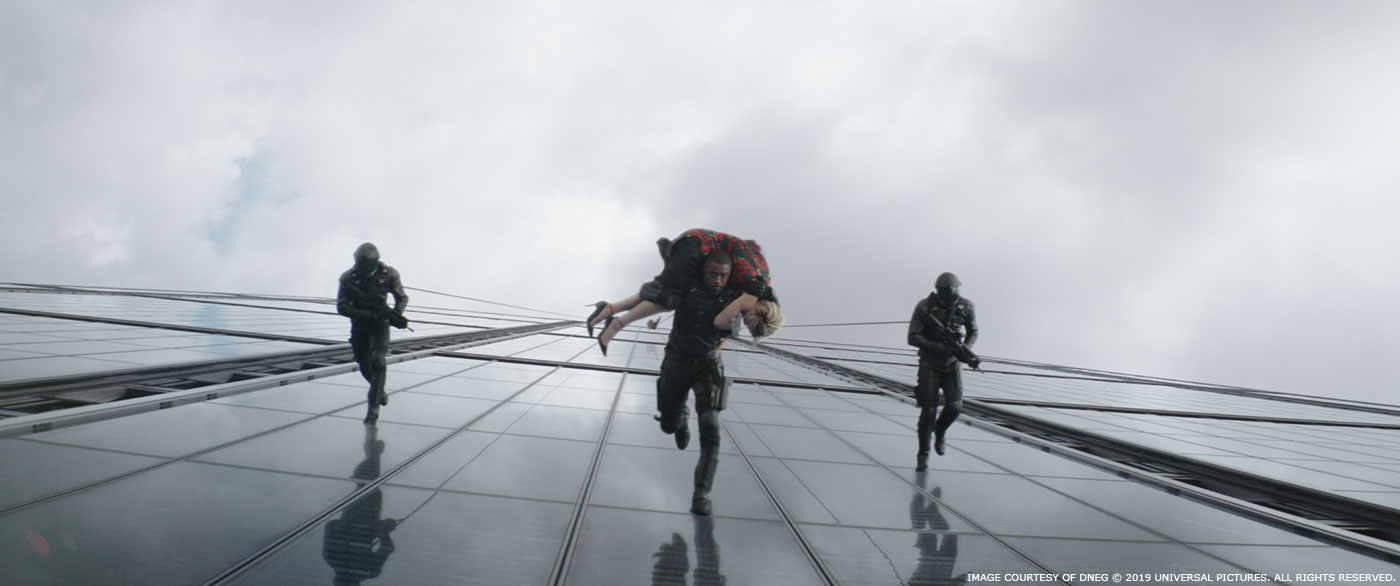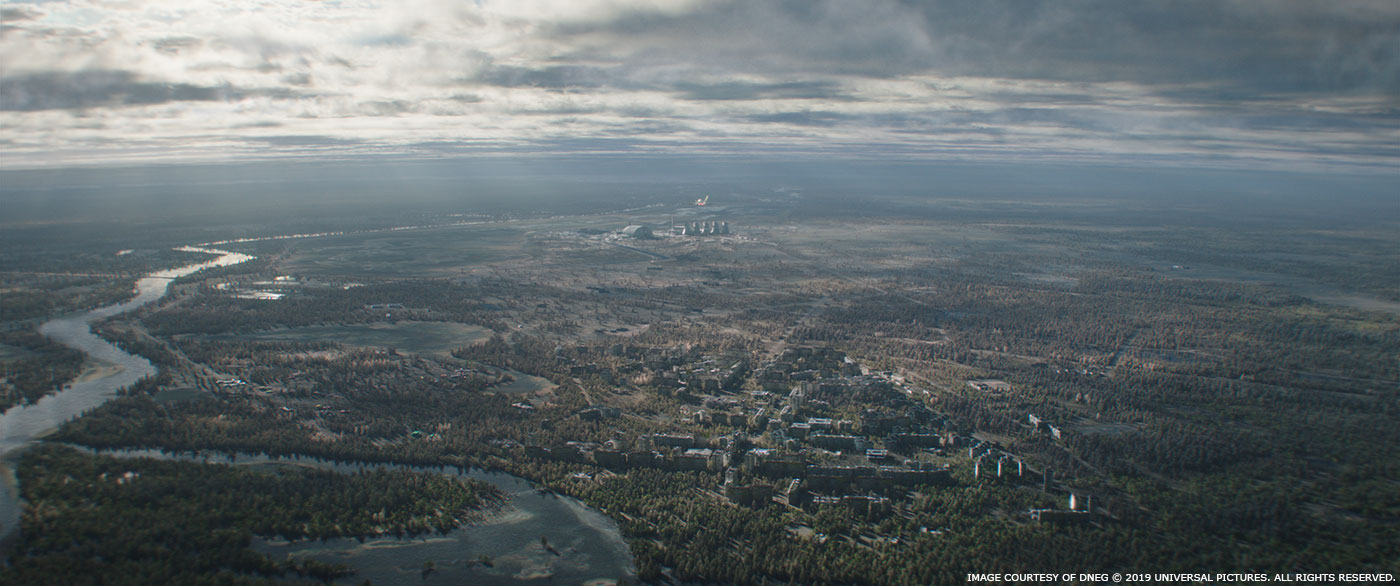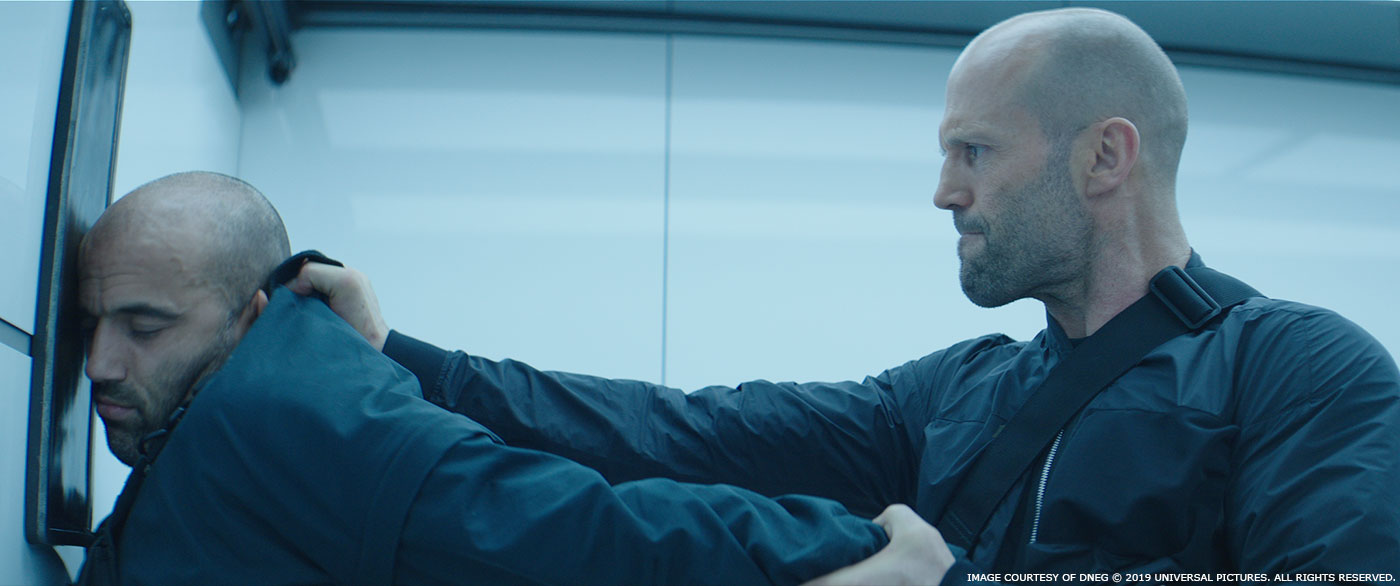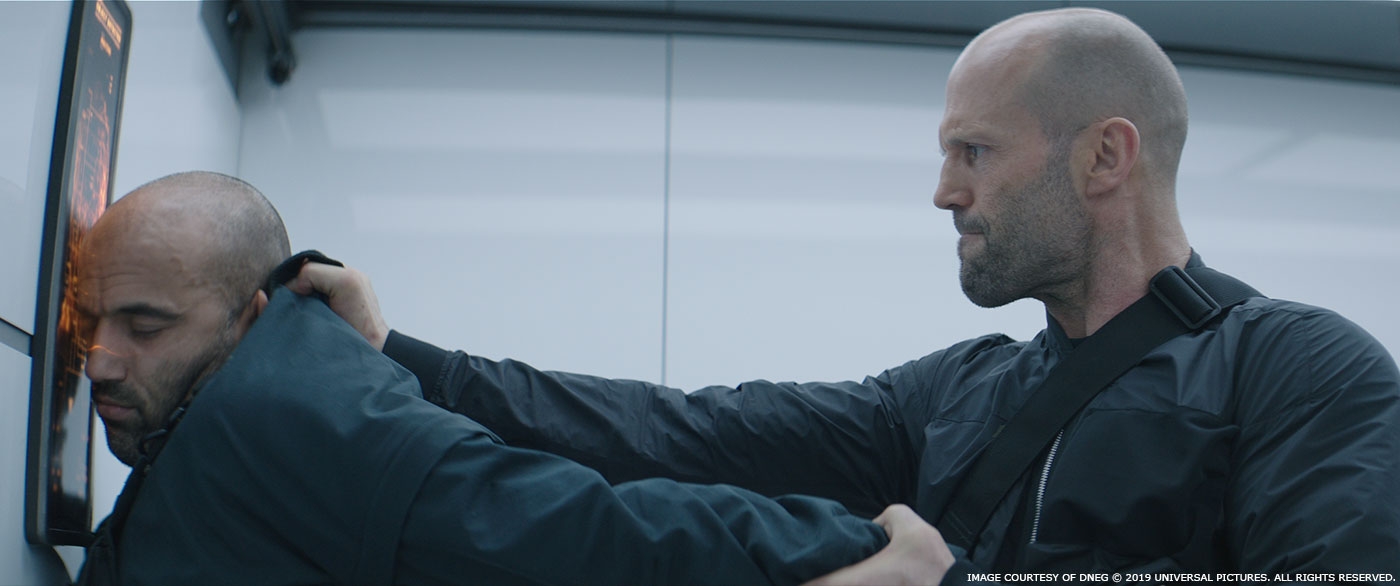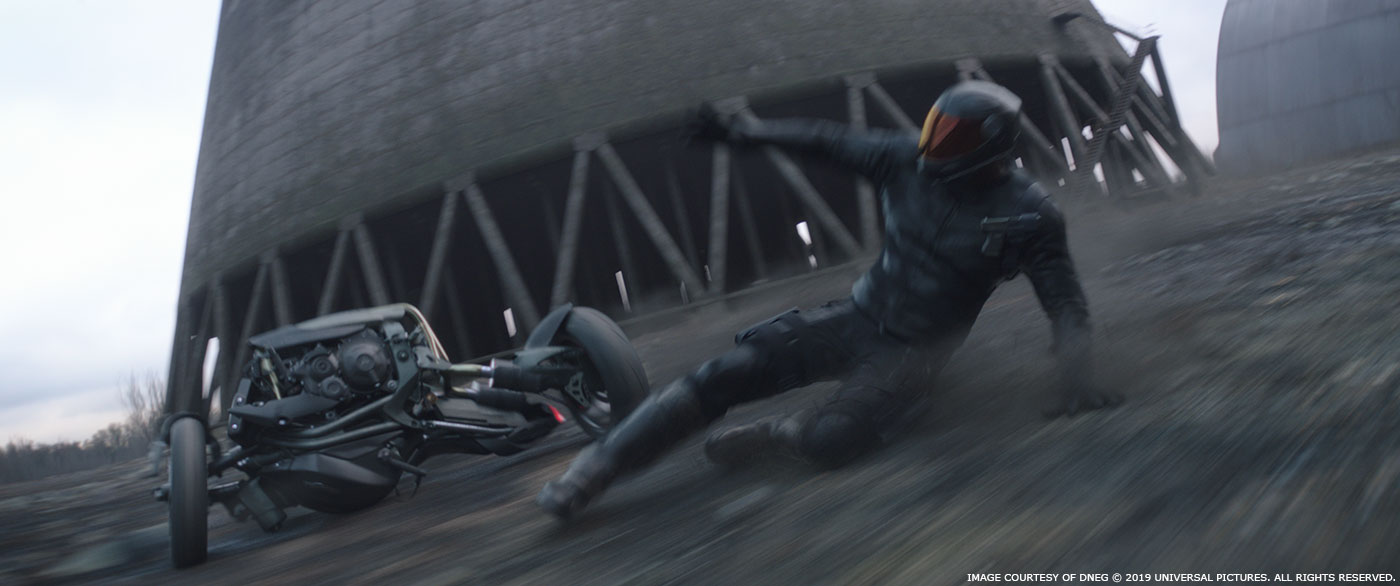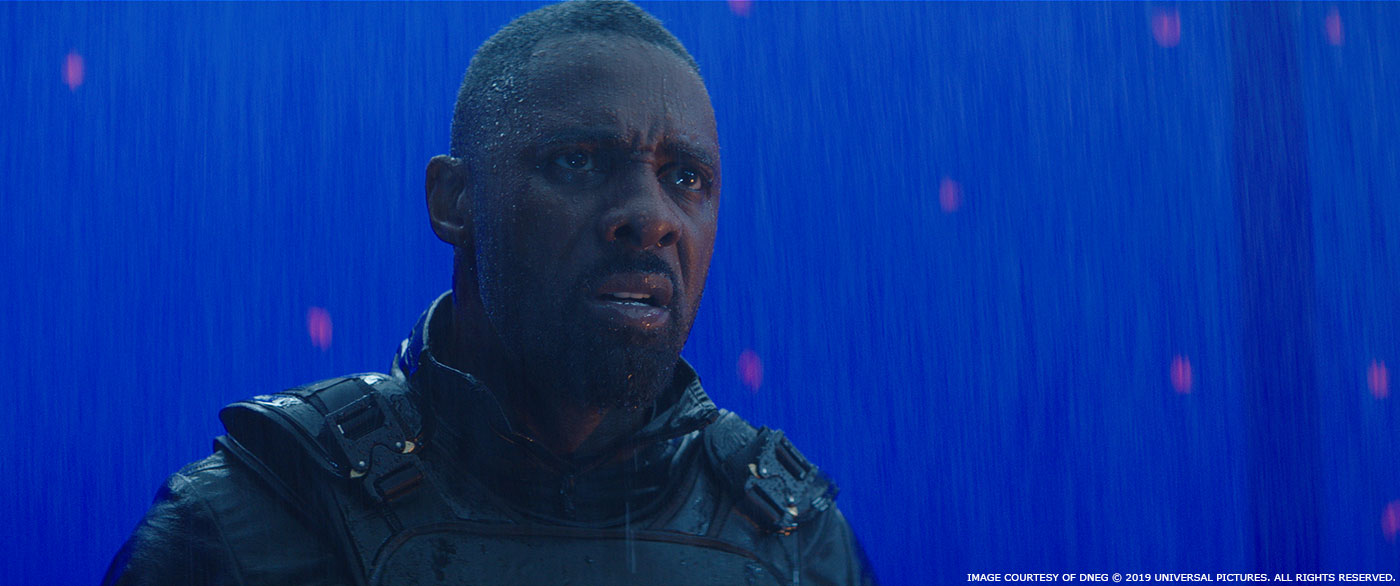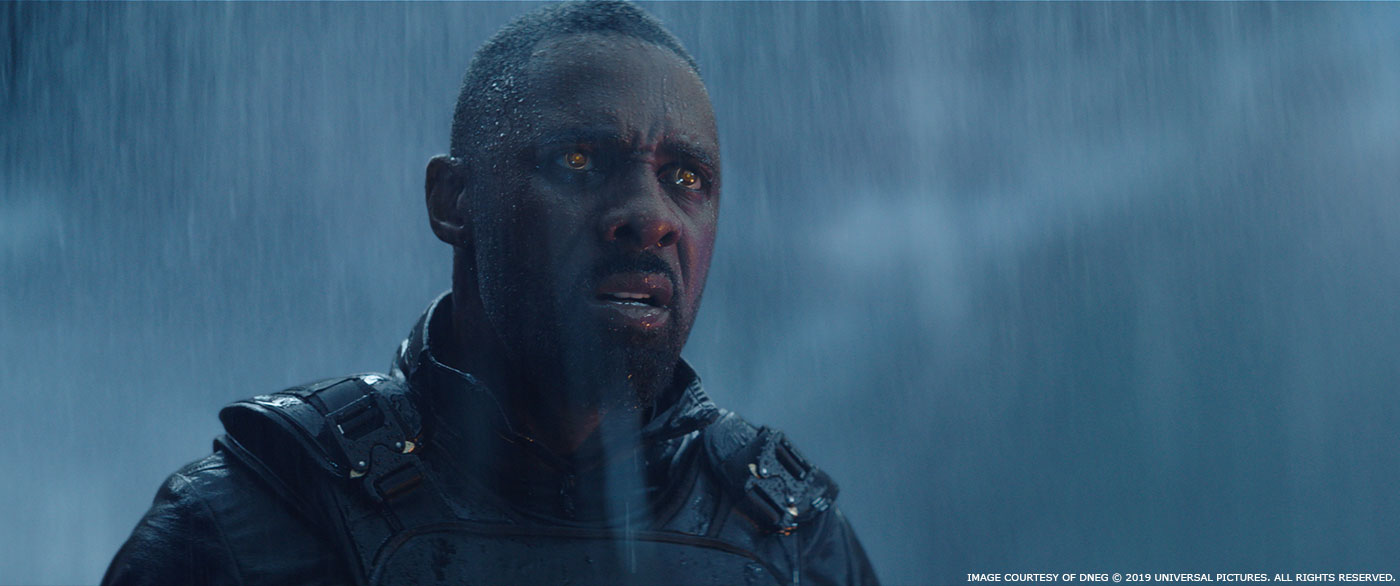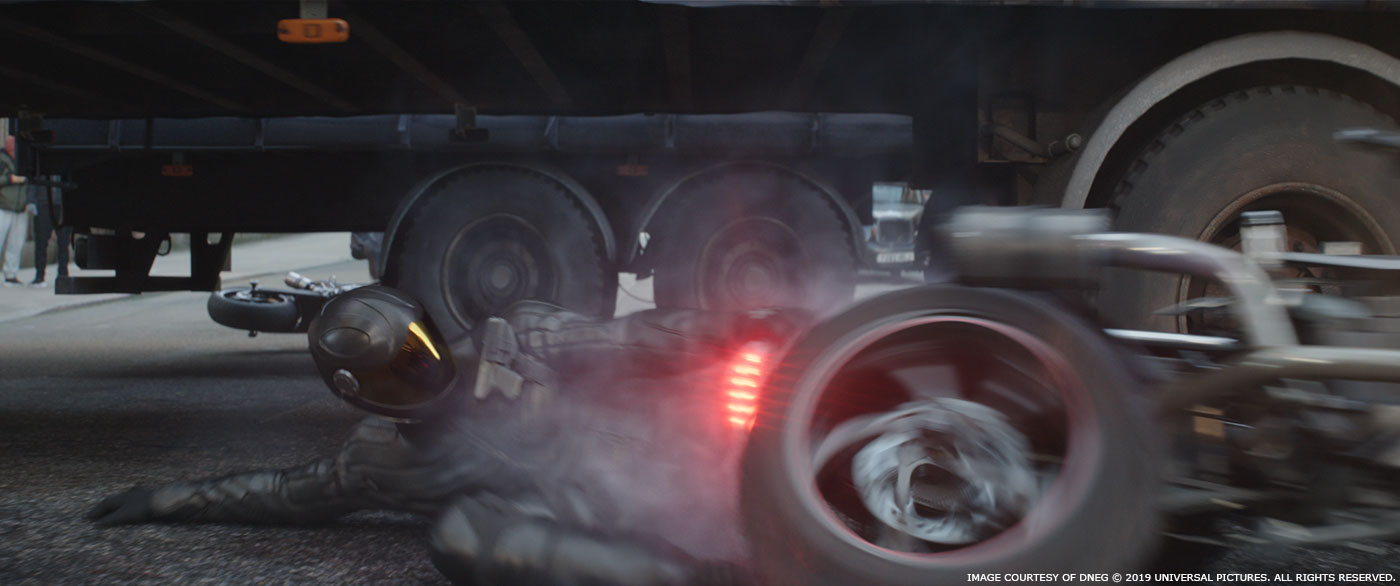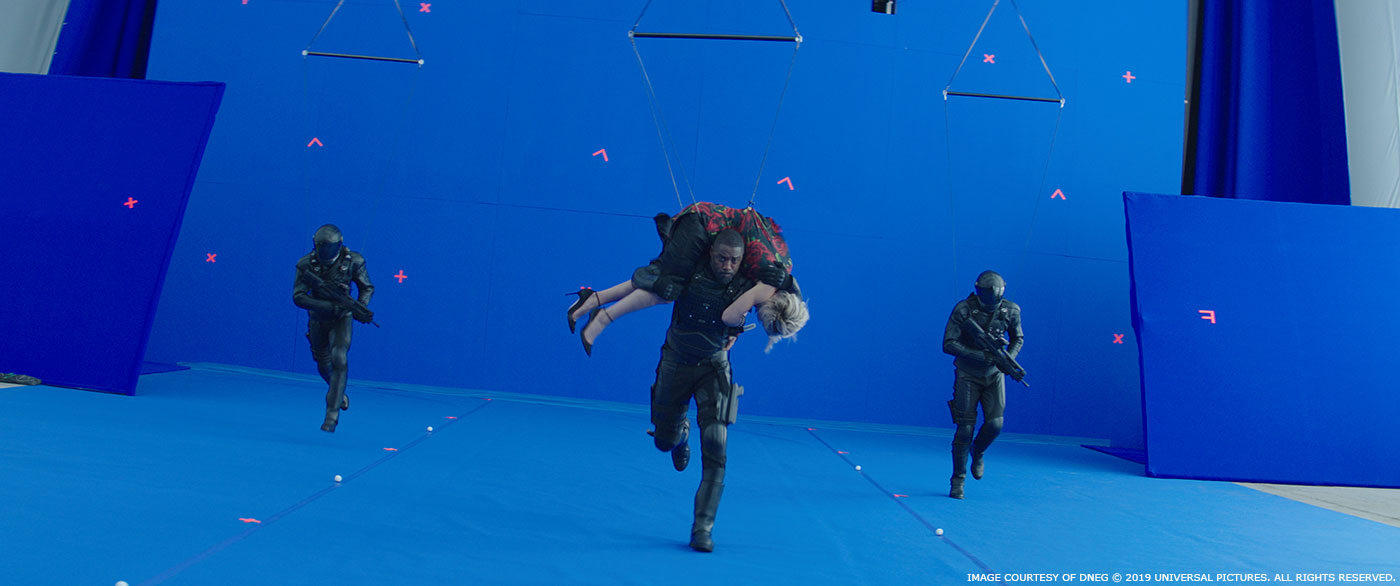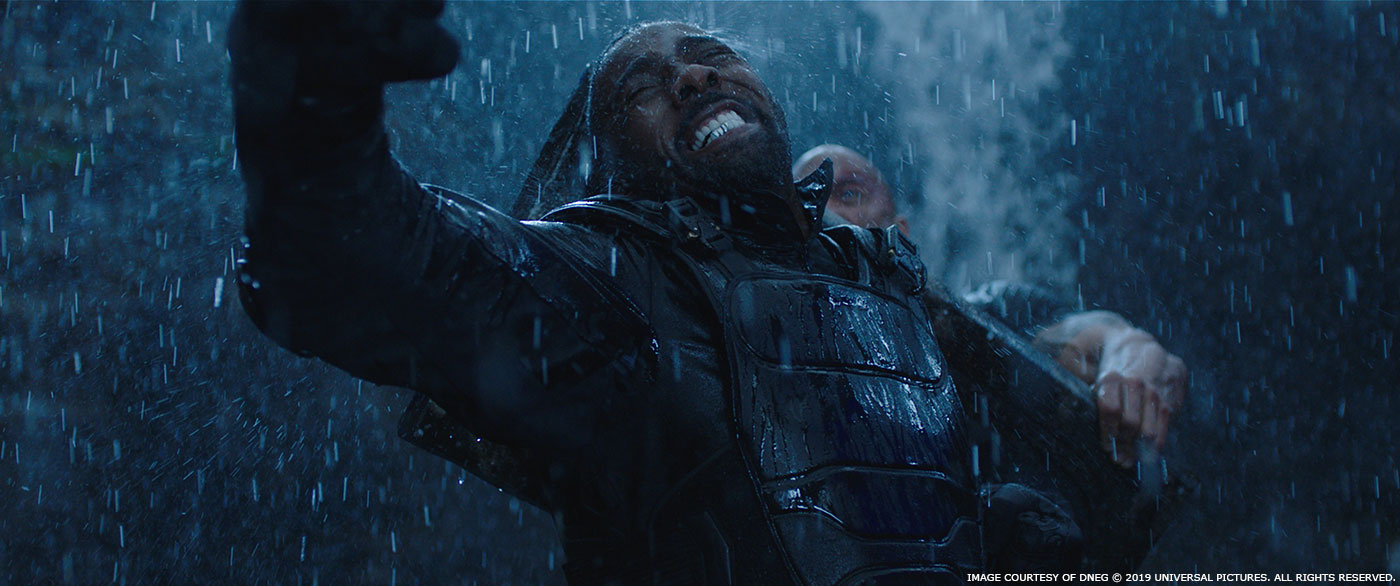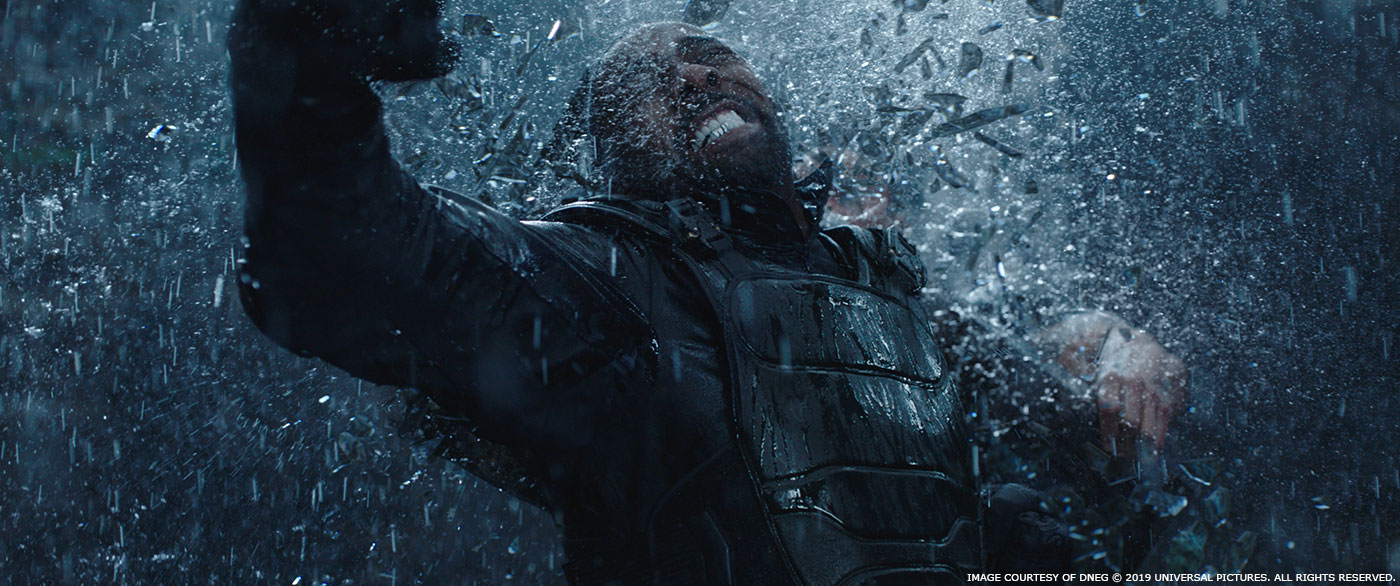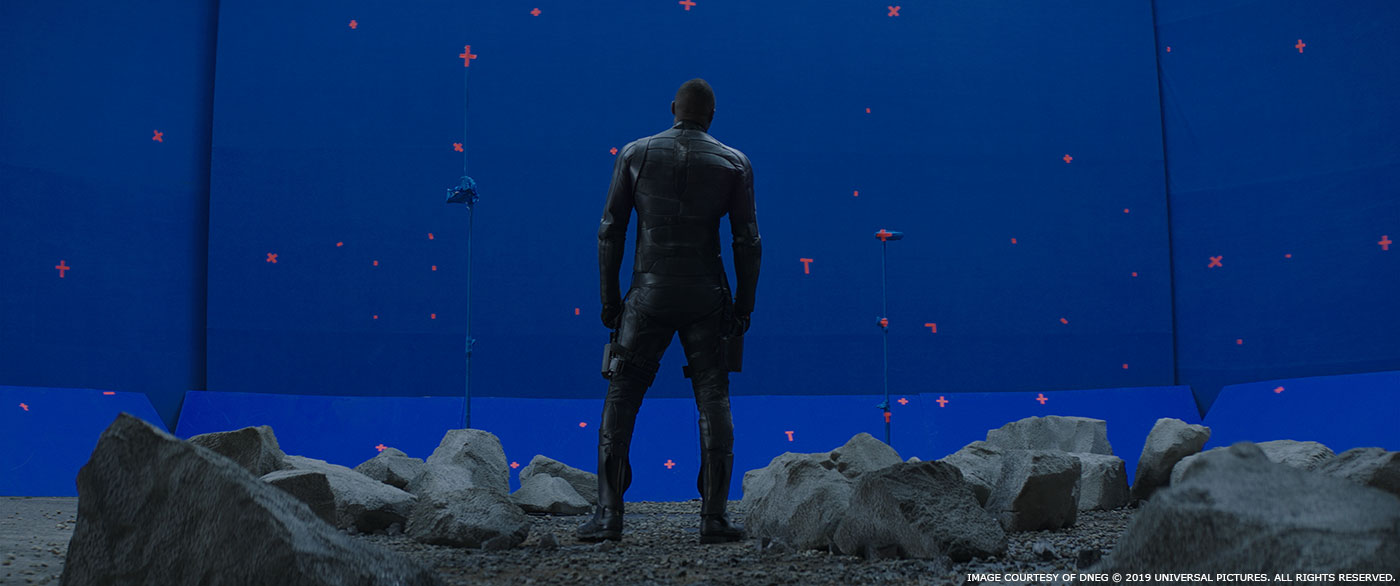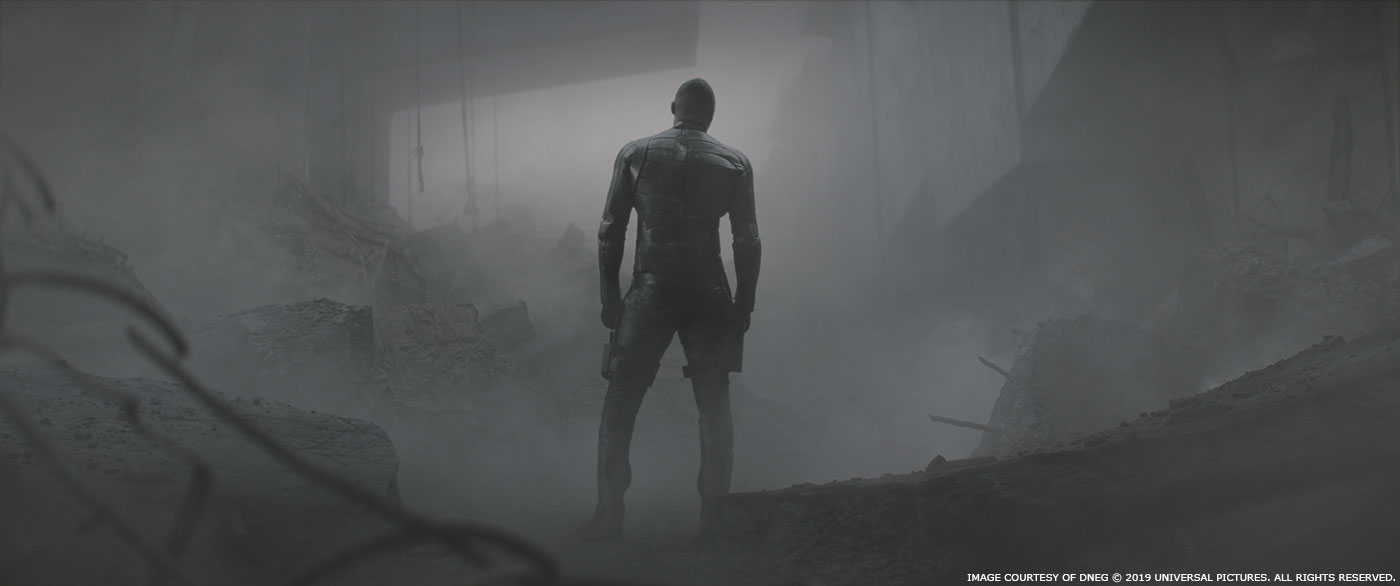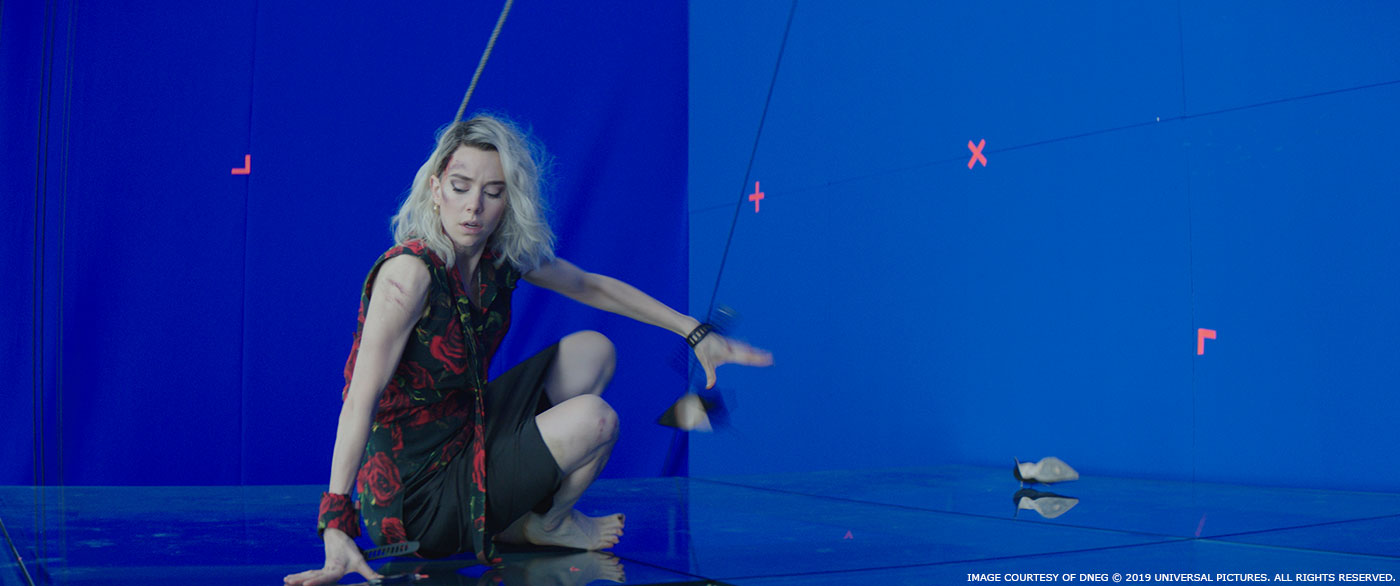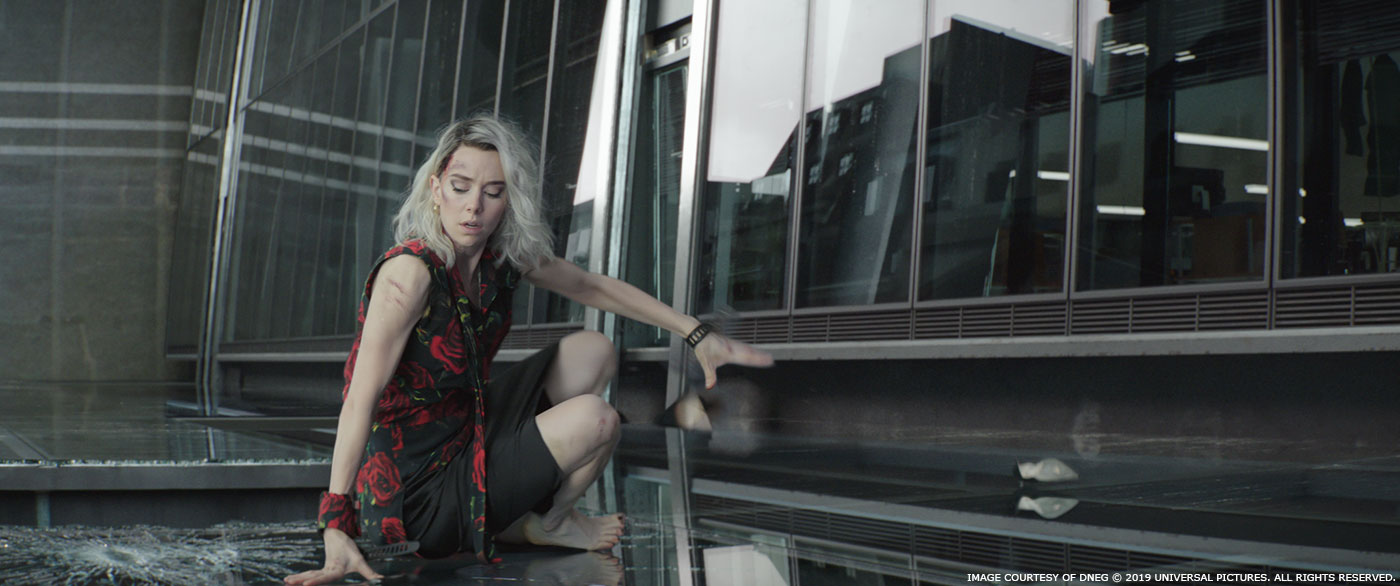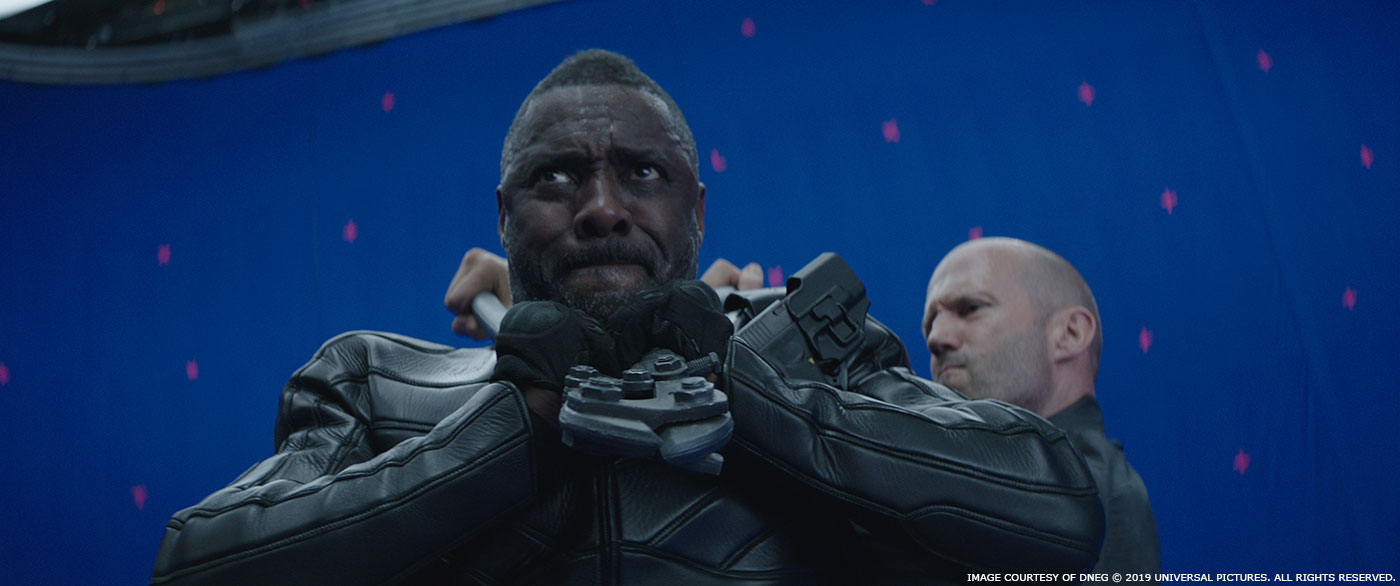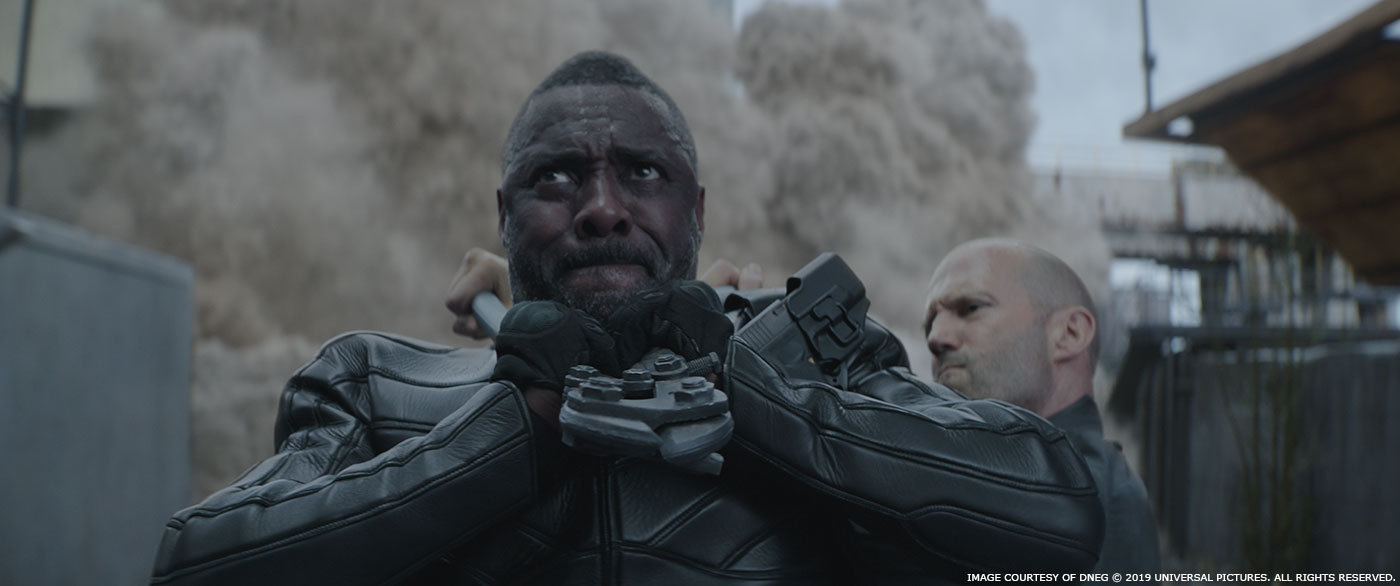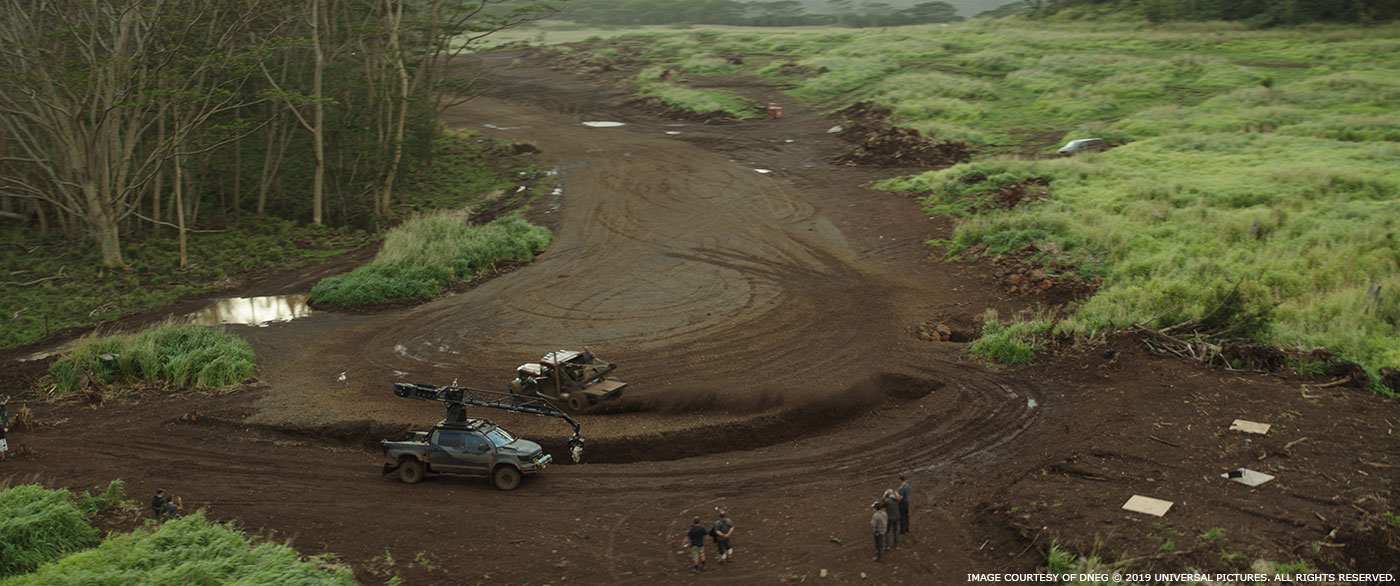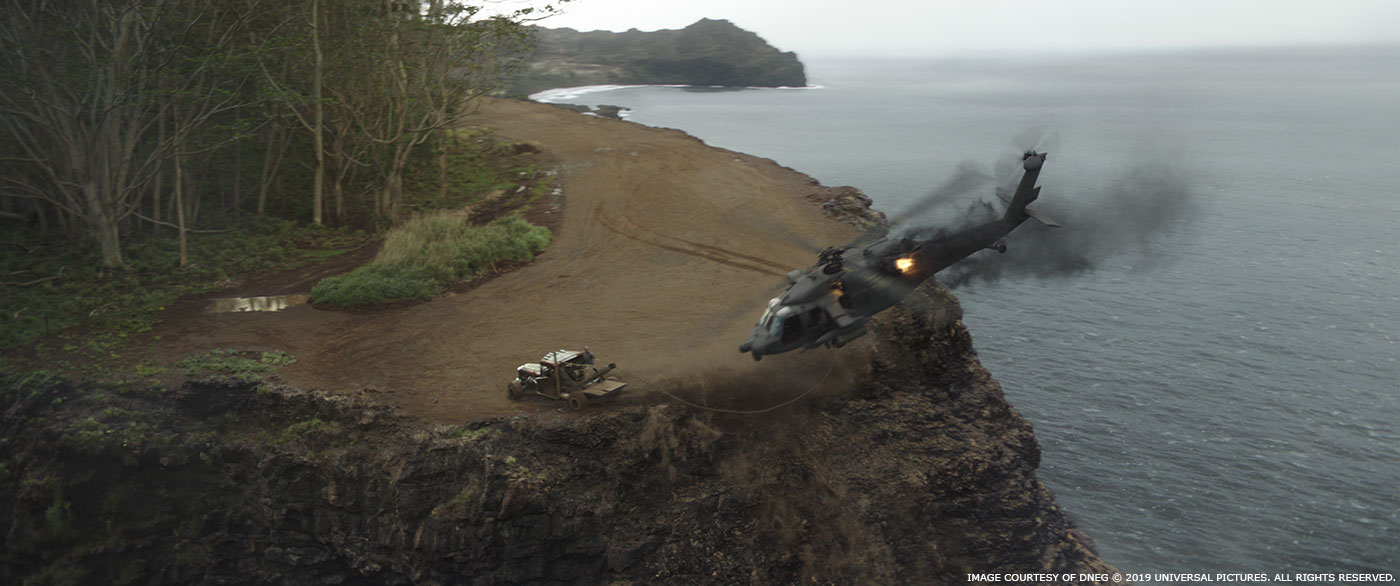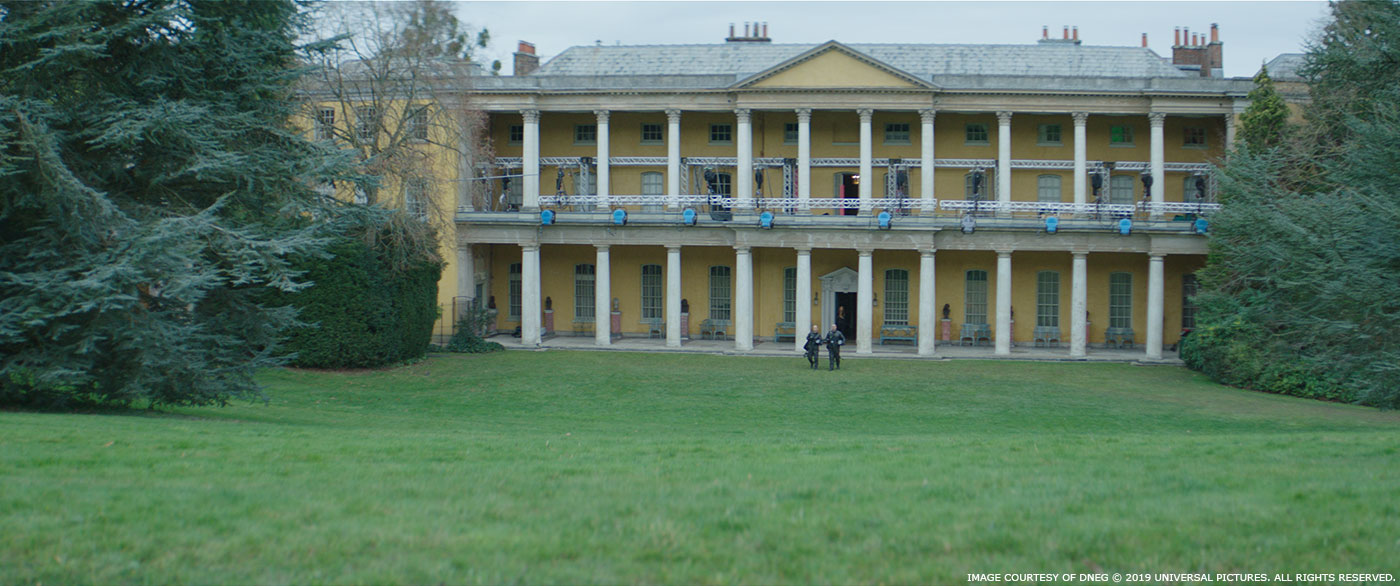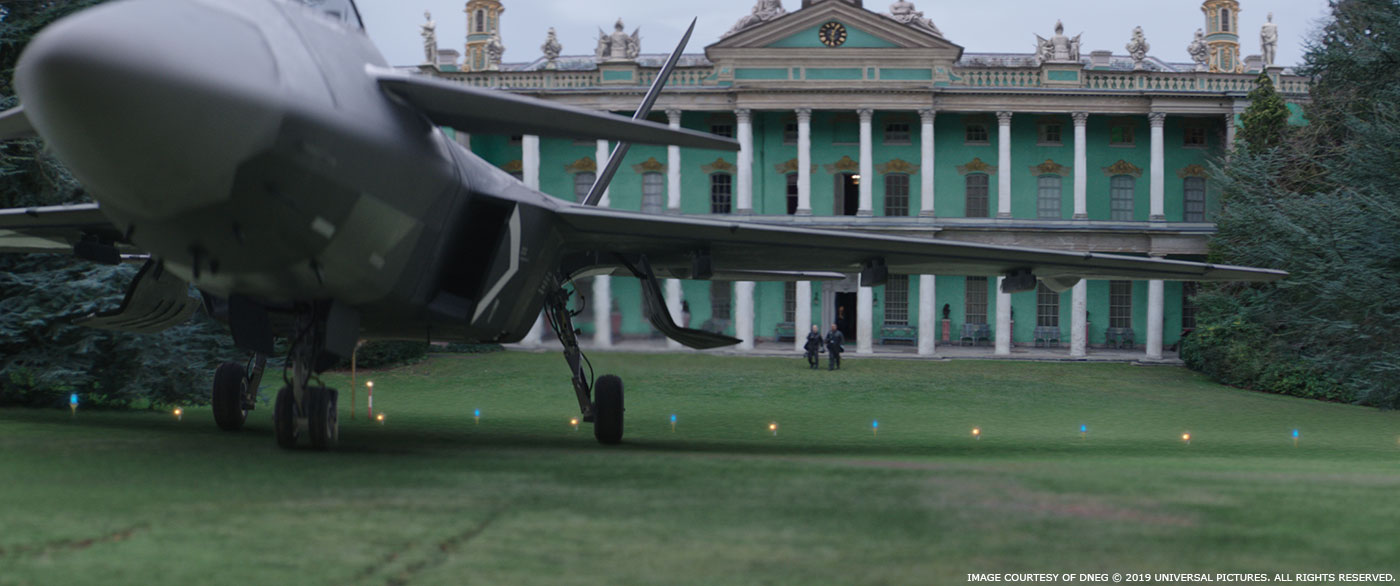In 2018, Dan Glass explained his work on DEADPOOL 2. He then joined DNEG and talks today about his work on FAST & FURIOUS PRESENTS: HOBBS & SHAW.
How did you get involved on this show?
This project started to evolve before I had even finished working on DEADPOOL 2 with David Leitch. He was gracious to allow me a few weeks of break with the family in between!
How was this new collaboration with director David Leitch?
David is tremendously enjoyable to work with, and together with his Production Designer, David Scheunemann, and Cinematographer, Jonathan Sela, who both came from DP2 also, it was a natural continued collaboration.
What were his expectations and approach to the visual effects?
David always wants to try to get as much in camera as possible, pushing stunts, art dept and camera to achieve great looking material that can stand without visual effects help or be a great foundation for it.
How did it feel to be part of the Fast & Furious universe?
It was a lot of fun to be involved in a project that is really about entertainment through and through, though with it also came high expectations which we knew we had to deliver on.
How did you organize the work with your VFX Producer?
Early on Viet Luu and I carved the work into two large chunks which were awarded to DNEG and Framestore. This gave us two very strong partners for planning and ultimately execution. Kathy Chasen-Hay handled VFX producing in post and together with Aliyah Lopez, VFX Associate Producer, we adapted as needed when the show grew adding additional vendors and reassigning some sequences where schedules demanded.
Can you tell us more about the previs and postvis process?
Previz was produced by Proof in the UK under the guidance of Matt Perrin whilst Postviz was supplied by Third Floor in LA under Alex Cannon.
The movie is full of crazy action sequences. How did you approach them?
In the spirit of David Leitch’s style we first tried to achieve what we could practically, at the very least finding ways to gather performances that felt like they were in the midst of the same gravity defying situations, even if backgrounds were composited later.
Actors and stuntmen were suspended, vehicles jumped and spun, cars hung from cranes and a real Blackhawk helicopter filmed for our Samoa chase sequence. For the backgrounds we shot lots of arrays so that everything was as photographic as possible.
Where were the various parts of the movie filmed?
We filmed in London, Glasgow, Eggborough (a disused power plant) and Hawaii.
How did you work with the SFX and stunt teams?
Alistair Williams (UK) and JD Schwalm (US) and their respective teams were incredibly proactive and devised a number of clever rigs for the project. In all cases there were many discussions about how far it made sense to push the practical before vfx help kicked in which made it very collaborative.
Which stunt was the most complicated to enhance and why?
We had a number of very complex gags to complete, demanding especially because of the integration work required to fit into the photography: Brixton’s transforming bike since this was featured in very slow motion so there wasn’t anywhere to hide; the Chernobyl chimney collapse since this spread across so many shots and involved a highly complex FX sim; and the Samoa chase which not only involved integrating suspended vehicles into practical photography but additionally required the digital carving out and addition of cliff and water edge for much of the sequence.
The bad guy Brixton is the Black Superman. How did you help him with that?
We added a read out in his eyes that gave him an advanced vision capability as well as his transforming bike of course. Idris Elba did a good deal of his own stunt fighting so much of that is him.
Brixton has a really special motorcycle. Can you elaborate in detail on its design and creation?
The transforming bike was actually an early idea that went away but came back in post so we had to design it into some of the existing stunt action. The team at DNEG London did a great job figuring a way to work with the actual motorcycle’s structure and create something that felt visually cool, credible future tech.
The London chase sequence is really long and challenging. Can you elaborate on your work on it?
As with other areas, we set out to shoot a lot of the London chase sequence practically, closing down several streets in central Glasgow (doubling for London) for a week. Felix Pomeranz came aboard as additional VFX Supervisor and helped oversee this. We built the sequence around a number of specific stunt gags and shot repeat runs for everything so that we had plates for all the interior dialog.
The movie has many super slow-motion shots. Can you elaborate on your work on those shots?
Slow motion is always fun but hard work as you can’t hide! They inevitably involve a lot of CG so at least you end up having quite a bit of control. Ultimately its a credit to the whole team putting these together as everything from the detail of the model, textures, animation, lighting and composite are displayed for scrutiny.
Can you tell us how you chose the various VFX vendors?
A lot of it is about existing relationships as well as matching teams with similar recent work, tax incentives also play a role. The team at DNEG (with whom I am affiliated) was a natural fit due to their previous FAST experiences and we placed work with their London team supervised by Stuart Lashley and their Vancouver crew, supervised by Mike Brazelton (who had worked with us on DEADPOOL 2 also). Framestore have also been great to work with over the years and they put up a strong team led by Kyle McCulloch and Ben Loch.
How did you split the work amongst these vendors?
We selected DNEG London for the “London” based work, DNEG Vancouver for CHERNOBYL and Framestore’s team to handle the third act of Samoa. Ultimately there was a little more crossover as the edit evolved and we added One of Us, RISE, Crafty Apes, Cantina Creative, Outpost FX, Exceptional Minds to help us get to the finish line.
Can you tell us more about your collaboration with their VFX supervisors?
I like to build close partnerships with the key vendors, looping them in early and involving them in planning and early acquisition / look development opportunities. As we got busier in post and at the same time managed an extensive Additional Photography shoot, we brought on VFX Supervisor Phil Brennan to share the task of disseminating information and feedback to the respective teams.
The vendors are all around the world. How did you proceed to follow their work?
Long hours…..! Typically mornings were dedicated to connecting with the European crews and late morning / afternoons were set aside for the North America teams. As a result of the global effort, submissions were arriving throughout the day so we would often try to get things in front of David Leitch more than once a day.
Which sequence or shot was the most challenging?
I’m never a big fan of this type of question – these projects are so all consuming that it can be hard to pin point any singular challenge. Overall our biggest challenge was time – the whole film was put together from start to finish in a little over a year and post was incredibly short for the size of project.
Is there something specific that gave you some really short nights?
There’s normally a little grace at the end of a schedule but on this we knew from the outset that we were up against a very hard deadline so nothing could afford to fall through the cracks… enough mental activity for many sleepless nights!
What is your favourite shot or sequence?
As with the most challenging question, this can be very hard to answer… the motorcycle under the trucks turned out to be really successful and a great crowd pleaser, but I was also really happy with the dolly shot where they are operating on Brixton’s back, Hobbs’ 360 degree truck smash up in Chernobyl, and the Samoa chase sequence for its credible outlandishness.
What is your best memory on this show?
I think that would have been the delivery of our second trailer – both because it was an awesome trailer but it also incorporated a lot of complex work and helped us to visualize the final stretch ahead and its attainability.
How long did you work on this show?
The entire run for me was just over a year – pretty short for a movie of this scale and complexity!
What’s the VFX shots count?
We ended up with just under 1600 shots in the final film but with many more worked on in the process and over 400 delivered for marketing in parallel.
What was the size of your team?
Our core team was made up of 9 along with 4 VFX editors.
A big thanks for your time.
WANT TO KNOW MORE?
DNEG: Dedicated page about FAST & FURIOUS PRESENTS – HOBBS & SHAW on DNEG website.
Framestore: Dedicated page about FAST & FURIOUS PRESENTS – HOBBS & SHAW on Framestore website.
One of Us: Dedicated page about FAST & FURIOUS PRESENTS – HOBBS & SHAW on One of Us website.
RISE: Dedicated page about FAST & FURIOUS PRESENTS – HOBBS & SHAW on RISE website.
Crafty Apes: Dedicated page about FAST & FURIOUS PRESENTS – HOBBS & SHAW on Crafty Apes website.
Outpost FX: Dedicated page about FAST & FURIOUS PRESENTS – HOBBS & SHAW on DNEG website.
© Vincent Frei – The Art of VFX – 2019

